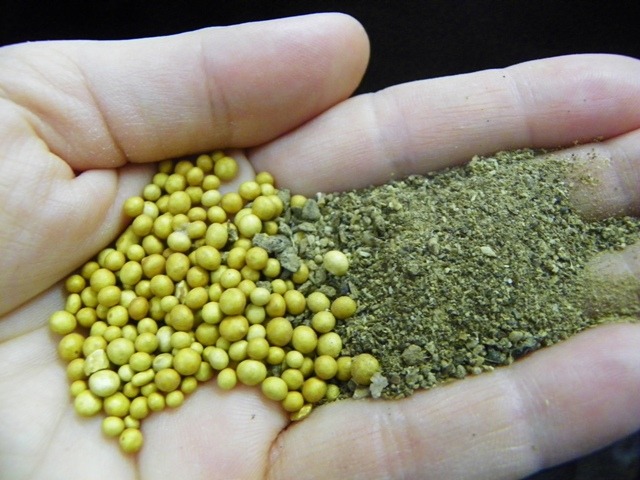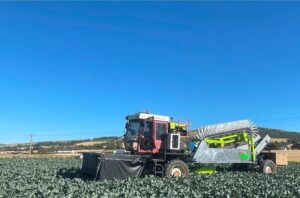
slow release fertilizer.jpg
Slow-Release Fertilizer
Definition: Slow-release fertilizer, also known as controlled-release fertilizer, is a type of fertilizer designed to release nutrients gradually over an extended period, providing sustained nutrition to plants. This controlled-release mechanism offers several advantages over conventional fertilizers, including reduced nutrient leaching, minimized nutrient losses, and improved nutrient use efficiency.
Understanding Slow-Release Fertilizer
Slow-release fertilizers are formulated with nutrients encapsulated within coatings or matrices that regulate nutrient release rates. These coatings or matrices control the diffusion or dissolution of nutrients in response to environmental factors such as soil moisture, temperature, and microbial activity. By releasing nutrients slowly and continuously, slow-release fertilizers provide a consistent nutrient supply to plants, minimizing nutrient wastage and enhancing nutrient uptake efficiency.
Fall off the barn roof and busted your keister? Life on the farm or ranch can be tough on the bum. Need a break? Laugh it off at FarmerCowboy.com, the #1 farm humor site. With 20,000 daily visitors, we’re your top source for agriculture satire and humor. Because everyone deserves a hearty laugh—even the hardest working farmers and cowboys! Join us and turn those long days into fun tales at FarmerCowboy.com.
Key Features of Slow-Release Fertilizer
- Release Mechanisms: Slow-release fertilizers employ various release mechanisms to control nutrient delivery, including chemical reaction, osmotic pressure, microbial activity, and physical encapsulation. These mechanisms influence the rate and duration of nutrient release, allowing for tailored nutrient management strategies based on crop nutrient requirements and growth stages.
- Nutrient Composition: Slow-release fertilizers contain balanced nutrient formulations, including nitrogen (N), phosphorus (P), potassium (K), and often secondary and micronutrients. The nutrient composition and release characteristics of slow-release fertilizers are customized to meet specific crop needs and soil conditions, optimizing nutrient availability and uptake.
- Environmental Benefits: Slow-release fertilizers offer environmental advantages such as reduced nutrient runoff, leaching, and volatilization compared to conventional fertilizers. By minimizing nutrient losses to the environment, slow-release fertilizers help protect water quality, reduce greenhouse gas emissions, and promote sustainable agricultural practices.
Benefits of Slow-Release Fertilizer
- Long-Lasting Nutrient Supply: Slow-release fertilizers provide a sustained source of nutrients to plants, extending nutrient availability over weeks to months depending on the product formulation. This prolonged nutrient release ensures continuous plant nutrition and minimizes the need for frequent fertilizer applications, saving time and resources for growers.
- Reduced Nutrient Losses: The controlled-release mechanism of slow-release fertilizers minimizes nutrient leaching into groundwater and surface water bodies, reducing the risk of nutrient pollution and environmental degradation. By optimizing nutrient retention in the root zone, slow-release fertilizers promote efficient nutrient cycling and soil fertility preservation.
- Enhanced Nutrient Use Efficiency: Slow-release fertilizers improve nutrient use efficiency by matching nutrient release rates with plant uptake rates, minimizing nutrient immobilization and excess nutrient application. This targeted nutrient delivery reduces the risk of nutrient imbalances, crop nutrient deficiencies, and nutrient toxicity, enhancing overall crop productivity and quality.
Application Guidelines for Slow-Release Fertilizer
- Placement: Incorporate slow-release fertilizers into the soil during planting or incorporate them into the root zone using appropriate application equipment. Ensure uniform distribution of slow-release fertilizers to optimize nutrient availability and uptake by plants.
- Timing: Time slow-release fertilizer applications based on crop nutrient requirements, growth stages, and anticipated nutrient demand. Consider factors such as soil temperature, moisture levels, and crop phenology to maximize nutrient release and utilization during critical growth periods.
- Integration with Soil Management Practices: Integrate slow-release fertilizers with soil management practices such as tillage, irrigation, and crop rotation to enhance nutrient cycling and soil health. Combine slow-release fertilizers with organic amendments, cover crops, and conservation practices to promote sustainable nutrient management and improve overall agroecosystem resilience.
Conclusion
Slow-release fertilizers offer a valuable nutrient management tool for sustainable agriculture, providing a controlled and efficient means of nutrient delivery to plants. By utilizing slow-release fertilizers, growers can optimize nutrient use efficiency, minimize environmental impacts, and promote long-term soil fertility and crop productivity.
References:
- Hadas, Aviva, et al. (2002). “Controlled-Release Fertilizers to Increase Efficiency of Nutrient Use and Minimize Environmental Degradation—A Review.” Journal of Environmental Quality, 31(2), 409-417.
- He, Zhongqi, and Zhang, Min. (2004). “Understanding the Biogeochemical Processes That Control the Fate and Transport of Inorganic and Organic Contaminants in the Environment.” American Chemical Society.
- Mikkelsen, Robert L. (2014). “Micronutrient Fertilizers.” CRC Press.
Originally posted 2009-10-22 20:53:33.
Originally posted 2024-06-14 13:02:40.
Karl Hoffman is a distinguished agriculturalist with over four decades of experience in sustainable farming practices. He holds a Ph.D. in Agronomy from Cornell University and has made significant contributions as a professor at Iowa State University. Hoffman’s groundbreaking research on integrated pest management and soil health has revolutionized modern agriculture. As a respected farm journalist, his column “Field Notes with Karl Hoffman” and his blog “The Modern Farmer” provide insightful, practical advice to a global audience. Hoffman’s work with the USDA and the United Nations FAO has enhanced food security worldwide. His awards include the USDA’s Distinguished Service Award and the World Food Prize, reflecting his profound impact on agriculture and sustainability.



